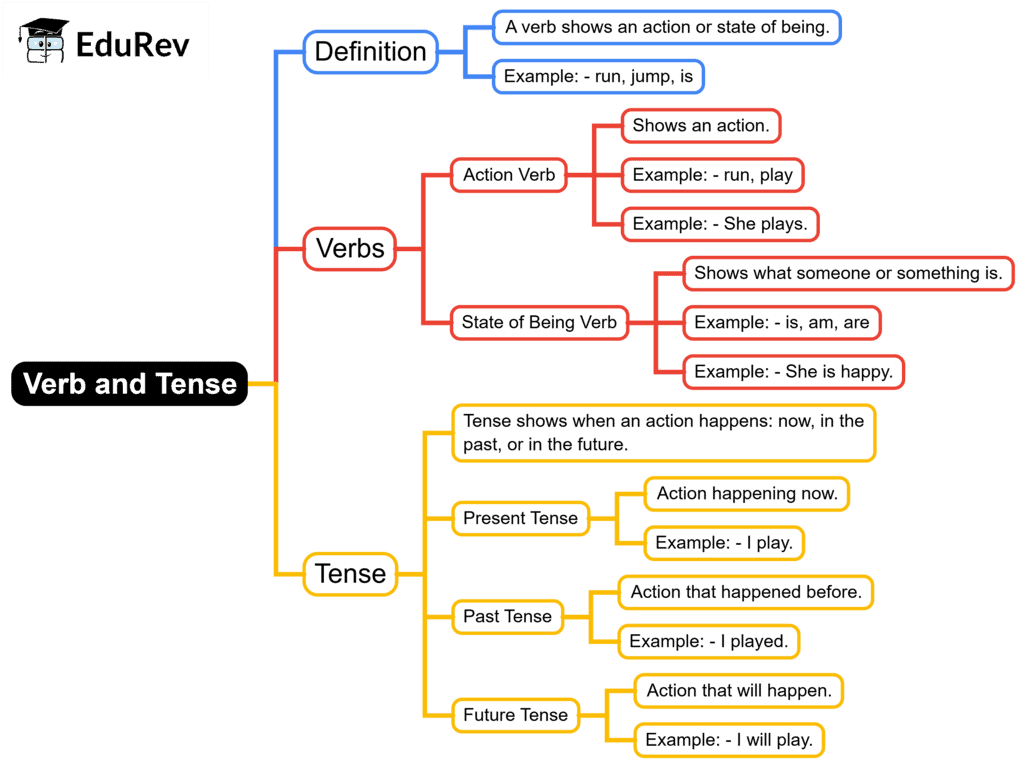Class 5 Exam > Class 5 Notes > English Grammar Class 5 > Mind Map: Verb And Tense
Mind Map: Verb And Tense | English Grammar Class 5 PDF Download

The document Mind Map: Verb And Tense | English Grammar Class 5 is a part of the Class 5 Course English Grammar Class 5.
All you need of Class 5 at this link: Class 5
|
37 videos|288 docs|53 tests
|
FAQs on Mind Map: Verb And Tense - English Grammar Class 5
| 1. What are the different types of verbs in English? |  |
Ans. In English, verbs can be classified into several types: action verbs, linking verbs, auxiliary (or helping) verbs, and modal verbs. Action verbs describe physical or mental actions (e.g., run, think), linking verbs connect the subject to a subject complement (e.g., be, seem), auxiliary verbs help to form different tenses (e.g., have, do), and modal verbs express ability, possibility, or necessity (e.g., can, must).
| 2. How do verb tenses affect the meaning of a sentence? |  |
Ans. Verb tenses indicate the time of an action or state of being and affect the meaning of a sentence by clarifying when an event occurs. For example, the simple present tense ("I eat") describes a habitual action, while the present continuous tense ("I am eating") indicates an action currently in progress. Different tenses provide context and help specify the timing and duration of actions.
| 3. What is the difference between regular and irregular verbs? |  |
Ans. Regular verbs follow a predictable pattern when forming their past tense and past participle by adding -ed (e.g., walk → walked). In contrast, irregular verbs do not follow this pattern and have unique forms (e.g., go → went, eat → ate). Understanding these differences is crucial for proper verb conjugation in various tenses.
| 4. Can you explain the importance of subject-verb agreement in sentences? |  |
Ans. Subject-verb agreement is essential for grammatical accuracy in sentences. It means that the verb must agree in number (singular or plural) with the subject. For instance, a singular subject takes a singular verb ("He runs"), while a plural subject takes a plural verb ("They run"). Incorrect agreement can lead to confusion and disrupt the flow of writing.
| 5. How can I improve my understanding of verb forms and tenses? |  |
Ans. To improve your understanding of verb forms and tenses, practice is key. Engage in activities such as writing sentences in different tenses, taking quizzes, and using language learning apps. Additionally, reading a variety of texts can expose you to different verb usages, helping reinforce your knowledge of how verbs and tenses function in context.
Related Searches
















